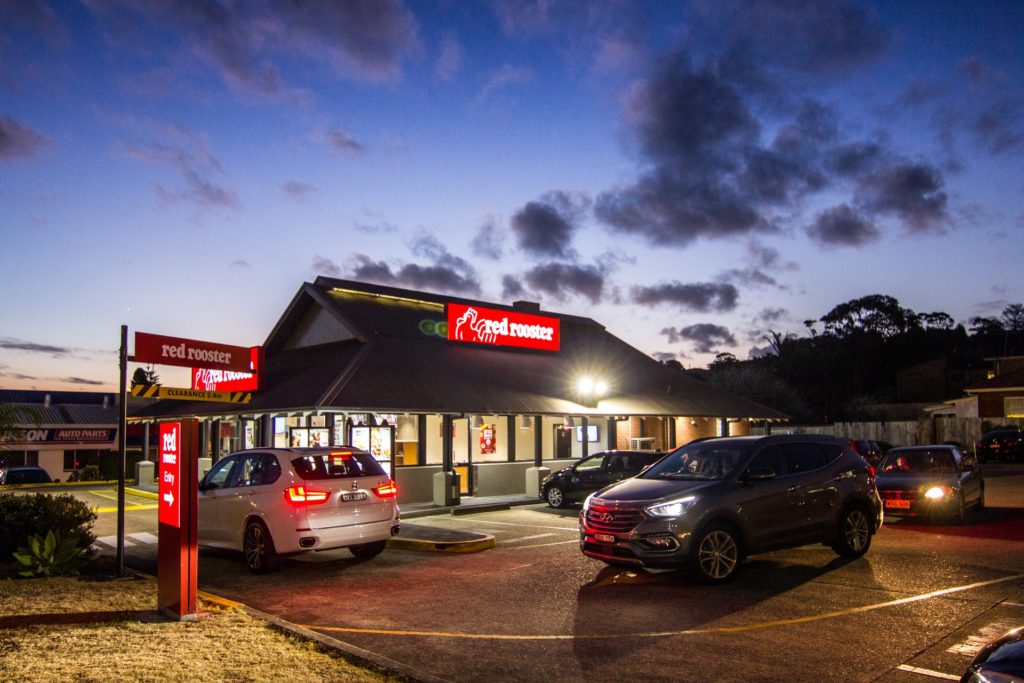In the UK, the word drive-thru was has been almost synonymous with the Golden Arches since the 1970s. Things quietly began to change when Starbucks launched its forecourt drive–thrus in 2010, with Costa following suit at retail parks in 2011. The drive-thru in 2021 may no longer be associated solely with fast food, but neither is every coffee shop or fast casual brand investing in the solution.
The average American will spend over $1,200 on drive-thru food annually. But even there, where drive-thrus have a far greater footprint – approximately 70 percent of fast-food sales are facilitated at a drive-thru, according to a 2018 study – growth has stagnated, with little spread outside of this core market. That is, until the COVID-19 pandemic made traditional dining and even takeout risky for consumers. Drive-thrus, however (and curbside collection) are as safe as can be possible, with zero human interaction required and no need for the guest to even leave their vehicle. They are also extremely efficient, ideal for families or workers on their way home from work or with limited time. Perhaps that’s why, as The NPD Group, reported, drive-thru visits increased 26 percent the months April – June.
With the COVID pandemic ongoing, the drive-thru in 2021 looks ready to take its popularity to another level. Before COVID-19 took hold, Costa operated approximately 40 drive-thrus in the UK, that number has leapt up; it now has 300 venues open for “drive-thru or takeaway”. Burger King’s biggest franchisee in the UK, Bridgepoint, is considering opening 30 new drive-throughs in the UK this year, Tim Hortons is also planning to capitalise on increased demand for drive-through dining in the UK and plans “to open an outlet in “every major city and town” over the next two years.”
Many of the best–known brands in North America have made a move to start up or expand their existing drive-thu estate. In the USA, in May 2020, CEO Kevin Johnson announced Starbucks’ plan to relocate low-performing units to real estate that could be utilised as drive thrus. More revealing, perhaps, was brands like Shake Shack and Wawa deciding to build their first ever drive-thru lanes to attract the forever-changed audience.
And it’s not just big-name companies making an investment. In the UK, startup, @Pizza revealed in October that it had raised £1m to open new restaurants and launch drive-thru sites. Meatless Farm also dipped its toes into the market, it experimented with hosting the UK’s first-ever meat-free drive-thru. Arriving as a pop-up in August, time will tell if it returns with a permeant presence.
The reputation of the drive–thru as a tool for fast food and casual dining is beginning to change too. BrewDog announced its intent to launch four drive-thru pubs worldwide, one in the UK, one in the USA, a third in Australia and the final one in Germany. The locations will be for customers to return empty mini kegs, and collect fresh beer supplies.
Supporting the growth of drive-thru in 2021 will be an increasingly sophisticated network of technologies, easing ordering and payment and working to increase the speed of collection. With online ordering, there’s no need for guests to pull up by a digital menu at the front end of the drive thru, holding up queues while they make their selection – instead, they can order straight from their mobiles, entering their car number plate to aid order identification on arrival. Restaurants can also invest in plate recognition, or customer tracking to pre-alert the brand to the customer’s arrival.
As you might expect, the King of drive thru, McDonald’s is pushing things even further. Already two thirds of its sales each year come from drive-thru, its hoping to pish average transaction values even higher with Dynamic Yield technology, which adjusts menus in real-time based on external elements such as the time of day, weather and current line efficiency. The solution is already active in 12,000 drive-thru restaurants across North America. Even more adventurous are companies like Advantech which says it can use facial recognition to analyse what customers are feeling thereby helping brands understand their challenges and potentially recommend products to fit their moods.
So, will you be investing in drive-thru in 2021? While social distancing continues, it is an opportunity for all brands, from fast food through to coffee or donuts to engage with customers safely and process transactions at speed. Brands have an opportunity here to break the association (in the UK at least) of the drive thru being the tool of ‘greasy burger chains’. With excellent quality food, buoyed by technology enhanced experiences the drive–thru is about to experience a fresh wave of popularity and will give those companies that make an investment, access to strong, and ongoing revenue streams.





